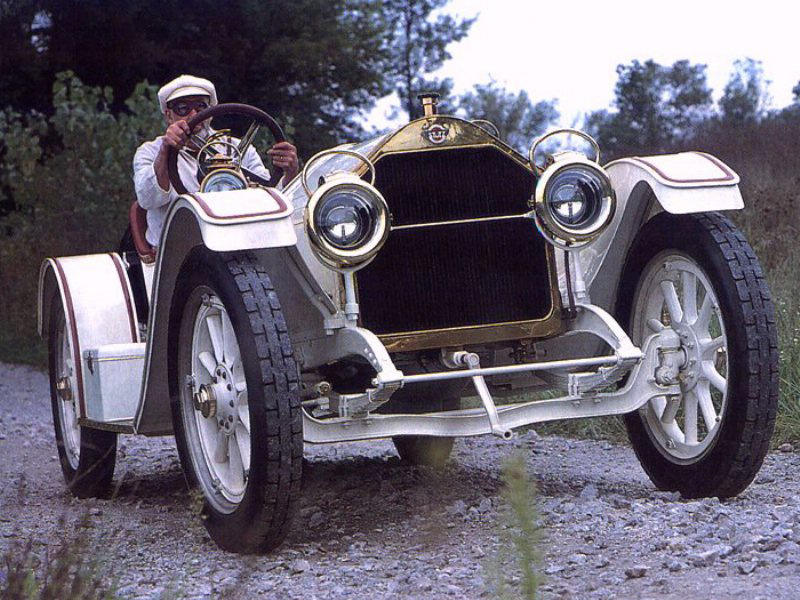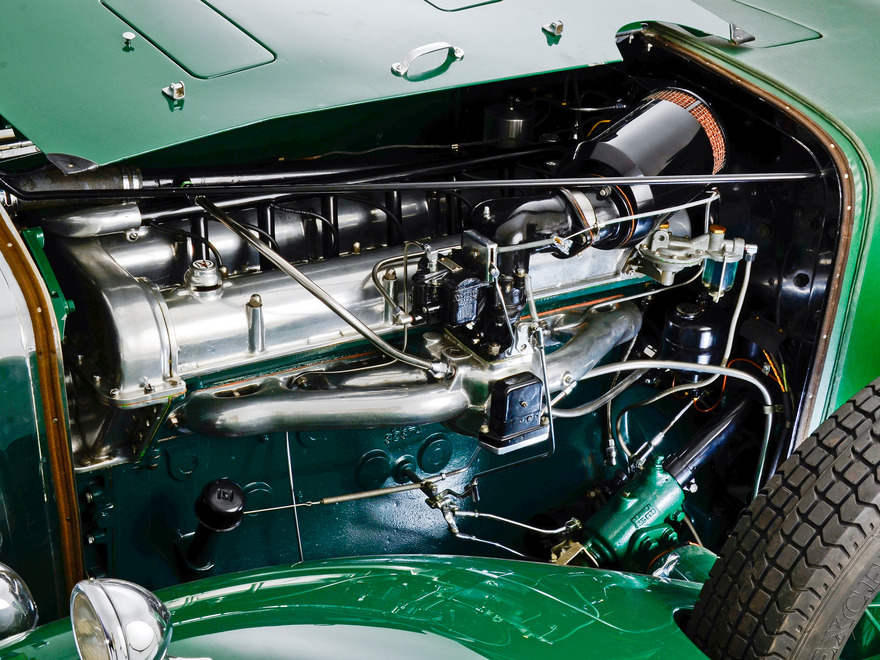Insurmountable difficulties rise on the way of a monk warrior on his path to Knowledge. The very few understand the teachings of the old master correctly. Thousands run away on the second day. Neither of them is guarded against errors. Like the Chinese eagerness in Shaolin Temple disciples, the Stutz company began its ascension to the top of car manufacturing with a failure and ended it with a 72-year long legend.
Harry Stutz (some sources call him Hefry) was designing race cars on the base of Ideal Motors Car in Indianapolis. After 3 years of his work there, in 1911 he established his own company which made a loud statement by producing a very fast baseline package Stutz BearCat model one year after its founding.
Jeremy Clarkson once said that marketing experts used to be just psychos 100 years ago. The car with a strange name combining a “Bear” and a “Cat” in one word, renamed later in “Panda”, was provoking hilarious laughter together with envy. But the irony laid not only in its name.
The very first client returned the car submitting a claim. In spite of large engine capacity, it could not overtake Mercer, a car popular those days. Willing to show its high speed quality, the Stutz company organised a TransAmerican race from the Atlantic to the Pacific Ocean. The racing driver Cannonball Smith crossed the continent behind the wheel of a BearCat in 11 days, 7 hours and 30 minutes. A new unregistered speed record was set. In addition to that, the car did not have any mechanical troubles. The only issue was with loose fastening of shock-absorbers.
In 1913 the “White Squadron” racers on “Pandas” astonished the USA. The Stutz team, consisting of Merz, Herr, Anderson, and also the legendary Barney Oldfield, was called not only daredevil but even freaky. Like a careless in thoughts and impatient in moves kung fu disciple, BearCat posed a real menace to the pilot. Even in a minor accident the steering column together with the ignition control mechanism could turn deadly. The fearless driver was hold only by bucket seats with a fuel tank behind them.
Low-speed 4-cylinder Wisconsin engine with T-shaped combustors was producing only 60 hp at 1500 rpm. With the aerodynamic qualities of a brick, 6.4-litre BearCat was accelerating easily up to 129 km/h. Three-speed gearbox transmitted the rotational power to the rear axle. BearCat had peculiar wooden spoked wheels with demountable rims.
The irony laid also in the fact that the crazy Panda was not only dangerous on the racing tracks but also very uncomfortable on public roads. Apart from the angular “dog house” bonnet, front wings and simple covering above the rear wheels, BearCat did not have any other signs of a body. Tiny transparent “monocle” on the steering column was protecting against rain and wind. It was luxurious for the driver and a dream for a passenger.
In spite of the simple so-called design of a car, it attracted a certain category of customers. Daredevil racers were winning the Indianapolis 500 mile race behind its wheel and the wealthy were cruising from one mansion to another drawing admiring glances.
Only think about it! Stutz BearCat did not have any doors up to 1916. Changing to left-hand drive construction would have led Panda to an imminent collapse. DH body turned out to be too narrow for the new bulky engine with a removable cylinder head. Gearbox and brake levers just simply did not fit in the car’s interior. Having parted with Dog House body, the engineers were trying to anticipate all factors when creating the next BearCat models.
Constantly upgrading, the company invited a Belgian engineer hoping to finally construct its own supercar. In 1926 Paul Bastien built a dangerous rival for Cadillac and Marmon. Deprived of the possibility to create an engine similar to those of the abovementioned companies, the constructor built a complicated unit on the base of an inline V8. He even conducted a few boost experiments.
Like a monk warrior who was restoring kung fu practice after the Hsin-hai Revolution, the Stutz company together with Bastien challenged the Great Depression. In 1931 Super Panda with a humble name — DV32 — came into this world. It was an outstanding construction at that time. 5.3-litre engine with the new cast-iron cylinder head was fitted with two camshafts and 4 valves per cylinder. Full bearing crankshaft was its pride. Furthermore, the car displayed full rain protection and higher power. It had an original 4-speed gearbox. The first speed was intended for arduous driving conditions and could only be turned on by pressing a special button on the gearbox lever. New was the system of central chassis lubrication and vacuum hydraulic brake booster. Transmission was featuring “transaxle” scheme in which the gearbox is mounted together with the driven axle. Sitting on a 3.41-metre and 3.68-metre wheelbase and weighing 1.8 tonne, the car was accelerating up to 160 km/h.
Too expensive and specific DV32 ended its career in 1934. At the time when the American society was striving to cut down expenses, the price of one Stutz chassis only reached $3200. Lebaron or Fleetwood body increased it up to $5000. However, the Sultan of Brunei indulged to see even two Panda cars in his garage.
“The true warrior never does things by halves”, the voice of a master reaches through the meditation mist. Vanishing and then reappearing in different variations, BearCat lingered on till 1987. Scoring victories in 25 out of 30 races in the very first year of its existence, the car became the legend of both pre- and post-World War II period. They say that “coast-to-coast” record inspired the director of “Cannonball Run” to create a film about the Crazy Panda. The restoration procedure of the car, which belonged to Barry White and was later shaped up by Danny Koker in 2012, was even shown in every detail on the History Channel.
Coming a long way from a failure to perfection, Stutz BearCat will always remain in the USA literature records as one of the most famous and wonderful cars of the beginning of the 20th century.
Photo: autowp.ru














